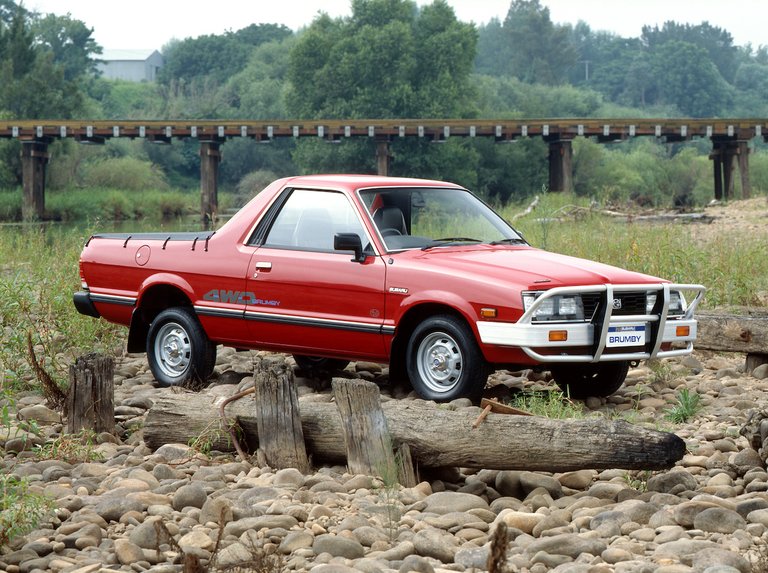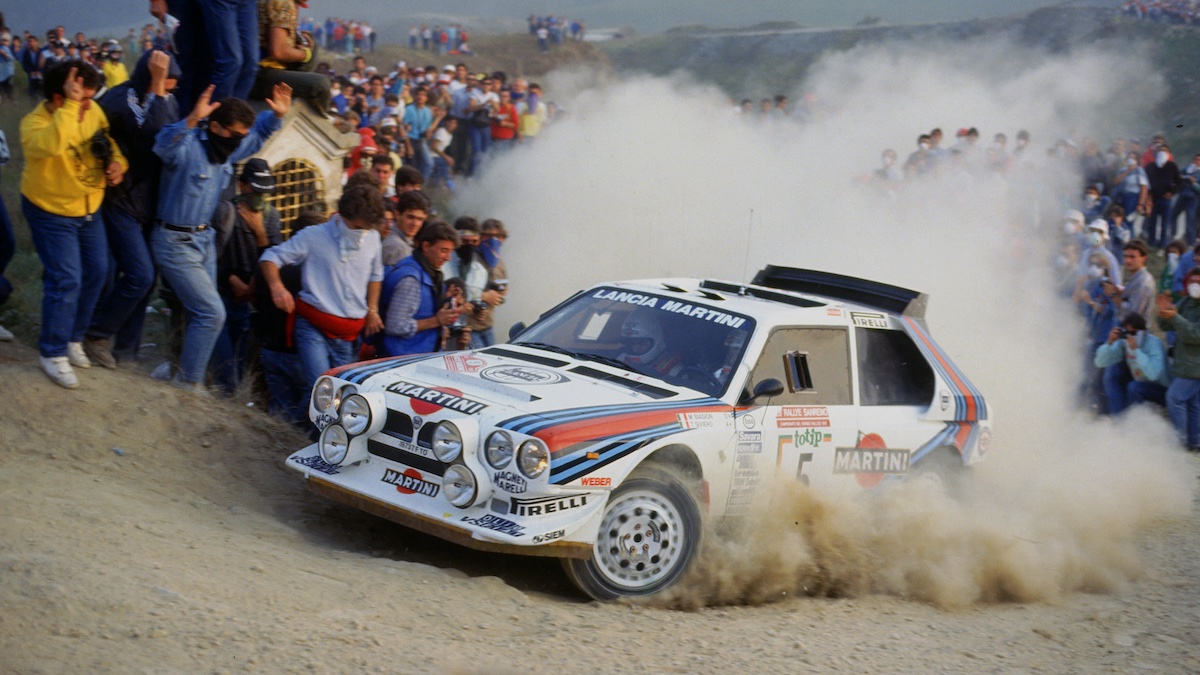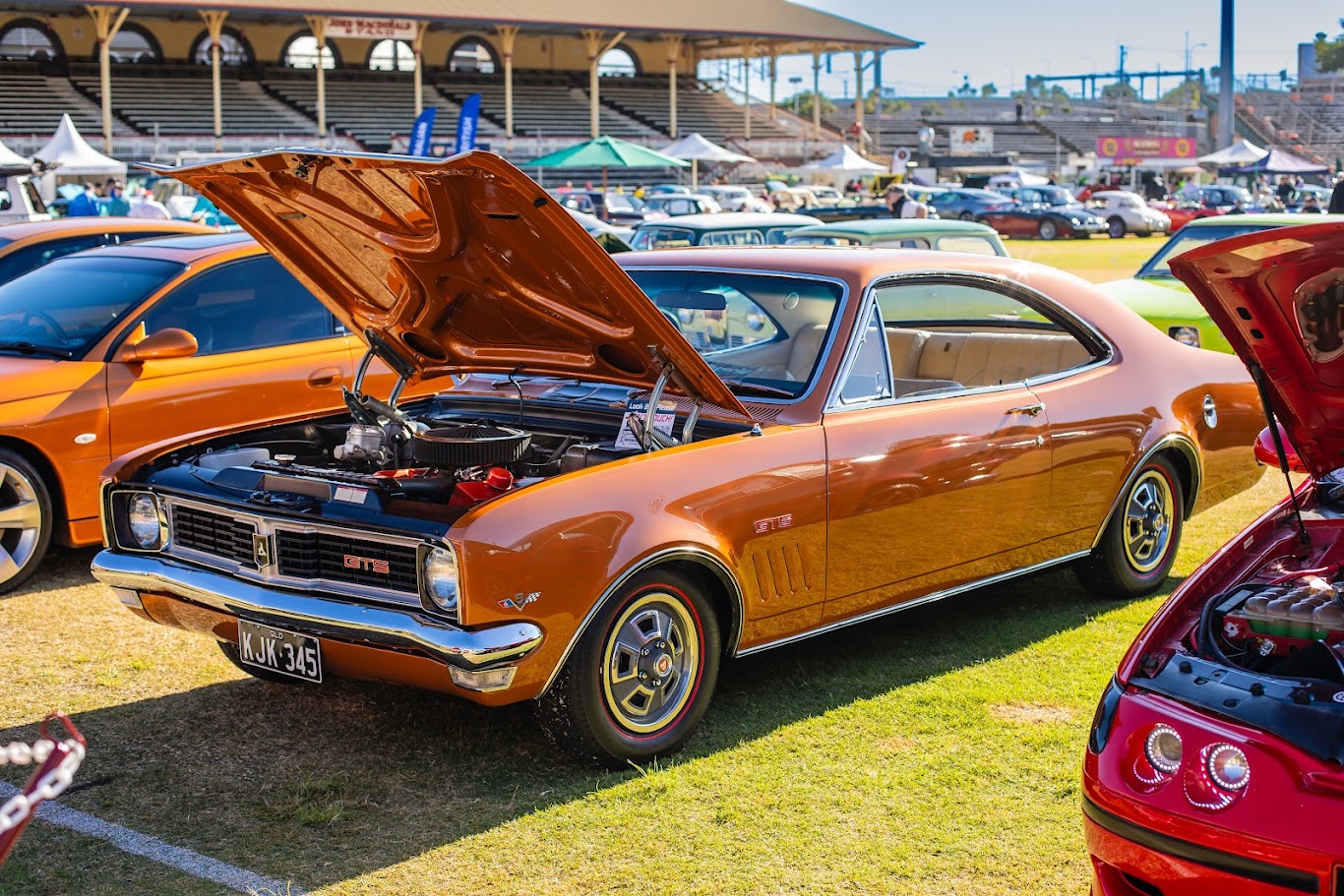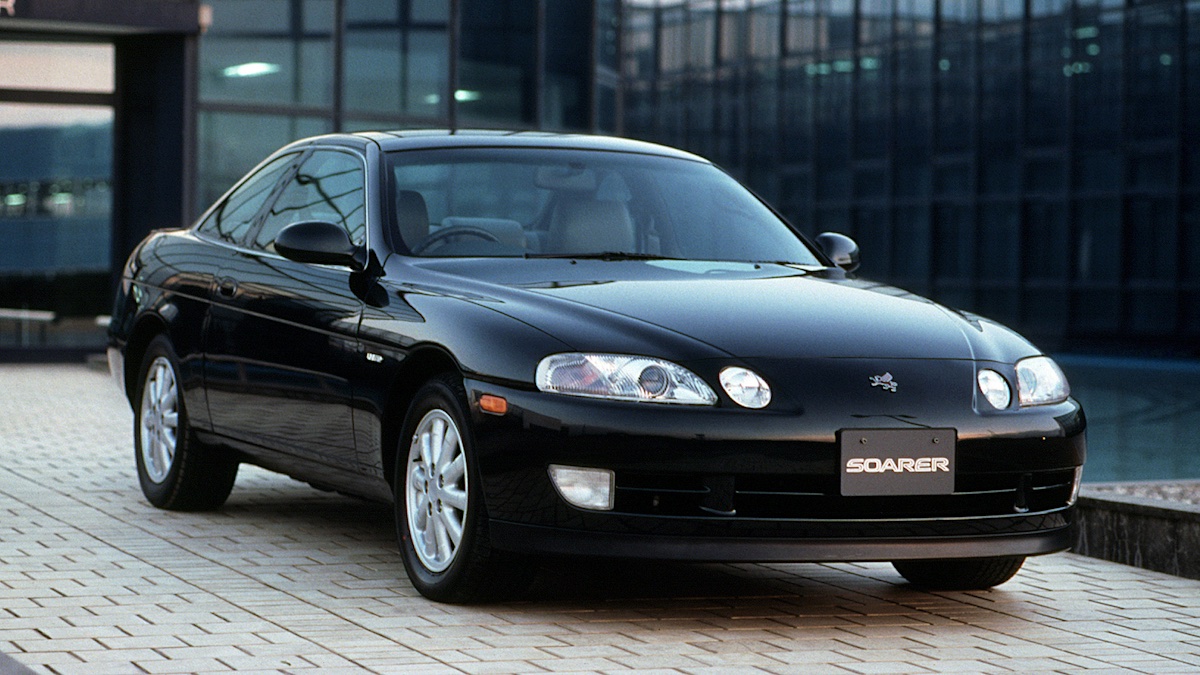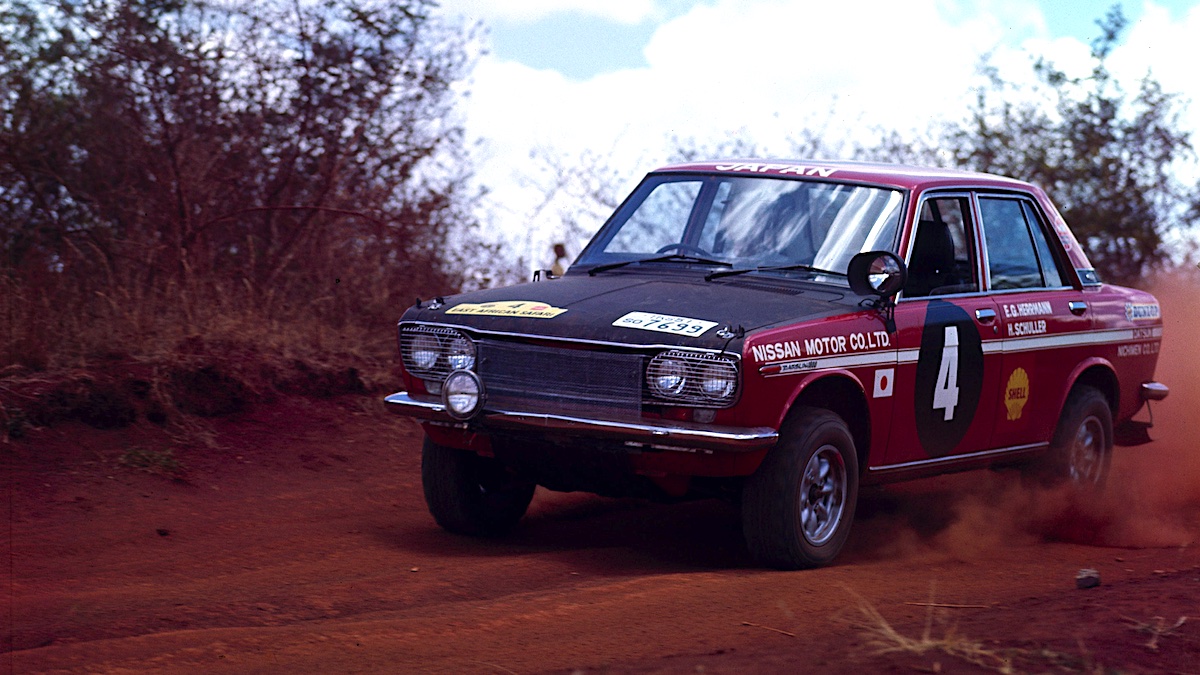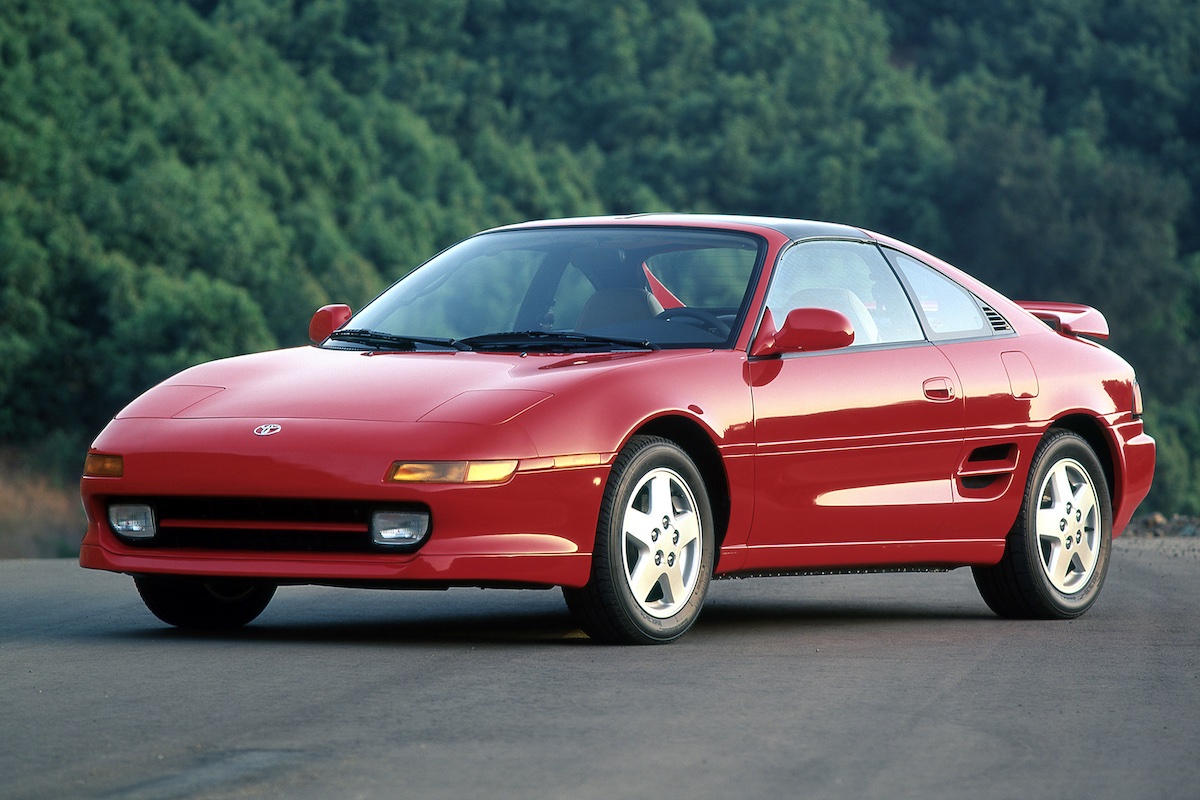In Australia, the simple and rugged Brumby was pitched primarily at rural buyers (Image: Subaru Australia)
Subaru began selling its versatile 4WD Brumby utility on the Australian market in 1977, but it took until 1982 for a more powerful and comfortable second-generation version to arrive.
The ‘MV-Series’ Subaru Brumby offered more interior space than the previous model and a stylish new look that survived unchanged until the model disappeared in 1994. In most other markets, it was known as the BRAT – an acronym for ‘Bi-drive Recreational All-terrain Transporter’ – while the more localised Brumby name was unique to Australia and New Zealand.
A Sport version joined the range in 1985, featuring lift-out roof panels, fancy colours including silver and metallic blue, an uprated music system and white-spoke wheels.
Subaru also periodically released AgQuip Special editions at discount prices and fitted with a variety of slow-selling accessories to commemorate Australia’s largest primary industry field days.
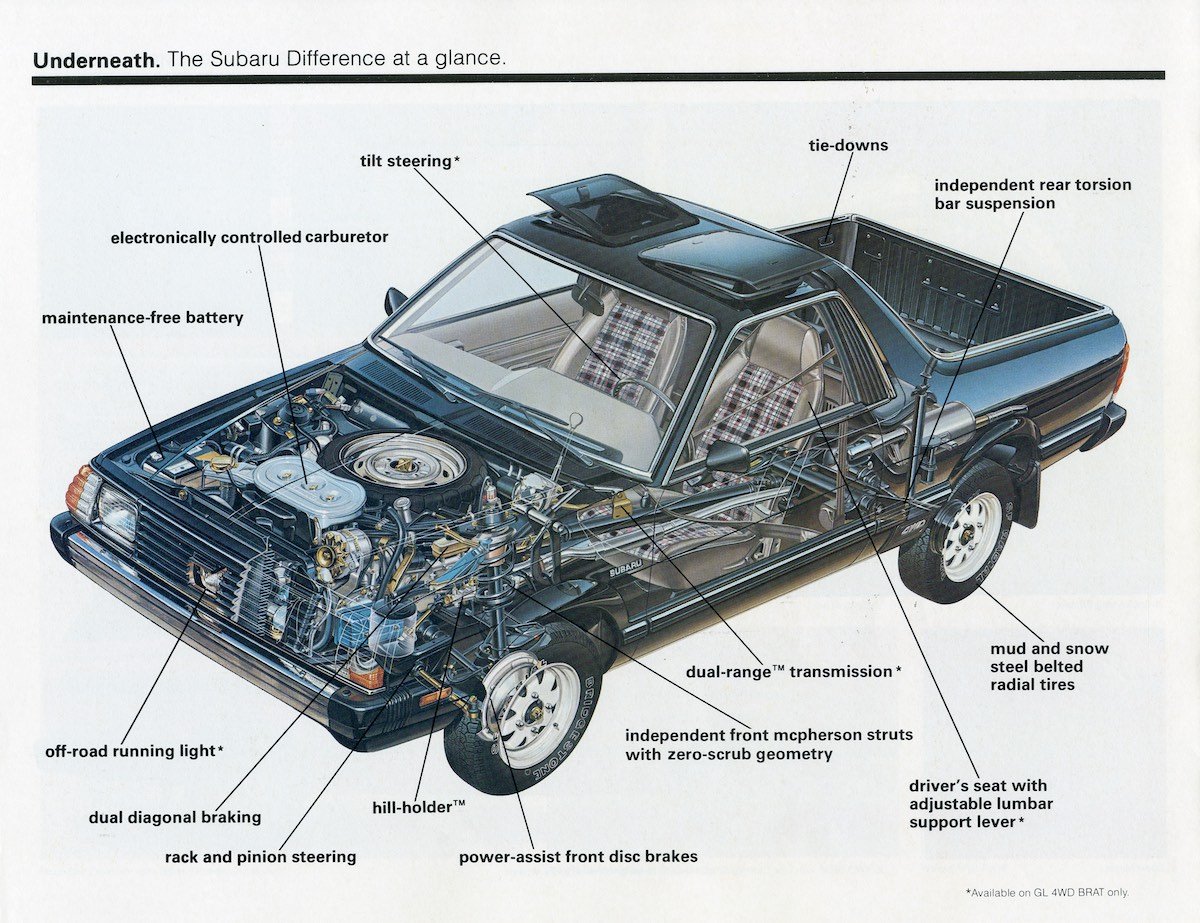
Featuring a basic 1.8-litre overhead-valve engine and dual-range manual gearbox, the Brumby offered genuine ability as a workhorse (Image: Subaru USA)
Pitched principally at rural buyers, the basic 1.8-litre flat-four Brumby stuck with a simple overhead-valve engine even when other models in the Subaru range moved to overhead camshafts.
Its dual-range, four-speed manual transmission made the Brumby a drudge at highway speeds but reasonably effective off-road, so long as the driver understood the limitations of its restricted ground clearance.
There are still plenty of Brumbys out there that have been fitted with aftermarket lift kits and over-sized wheels, but we recommend being cautious of such modified cars due to the potential for drivetrain damage caused by changes to driveshaft geometry.
Subaru enthusiasts advise that lift kits which increase clearance by up to 50mm (2-inches) can be fitted without affecting suspension geometry, but more extreme alterations should only be undertaken by a qualified suspension specialist.
Rust is rarely a problem with the Brumby, even though the little Subaru ute is now more than 30-years-old. This partially reflects effective rustproofing but also the limited clearance that discouraged beach driving.
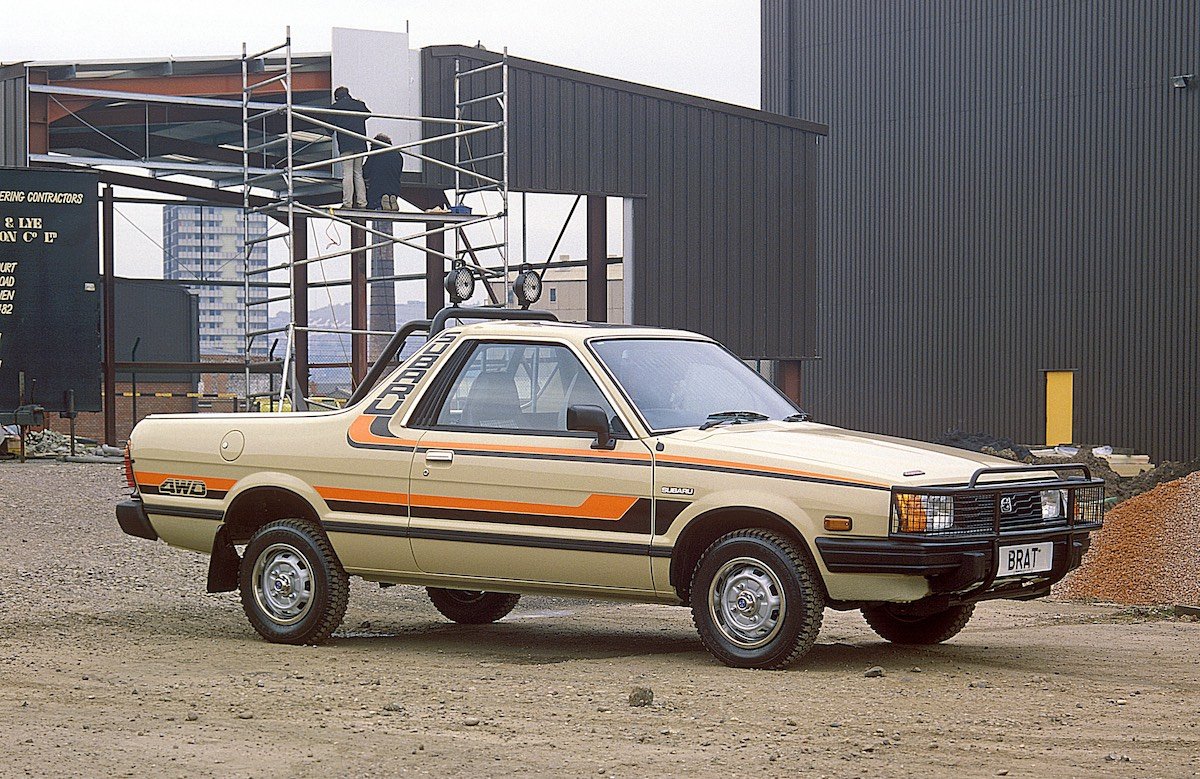
In other markets, the little Subaru pickup was known as the BRAT, with the Brumby name exclusive to Australia and New Zealand (Image: Subaru UK)
The tray is a decent size for a vehicle the Brumby’s size and tougher than Kelpie’s claws, so if the load area is seriously scarred and rusting, then you’re likely looking at a Subaru that’s done plenty of work.
Except for the constant velocity (CV) joints, these tough little load-luggers seem mechanically immortal. Engines can cover more than 300,000km before requiring a rebuild and the transmissions are equally durable.
Underbody damage including crushed exhaust pipes and damage to the catalytic converter is common and it is recommended to also check that the rear drive shafts haven’t been damaged by flying rocks.
Some vendors have been pricing ‘city’ Brumbys at over $20,000 but typical cars in regional markets should sell below $10,000. Sport versions are scarce and worth more.
Things To Watch Out for When Buying a Used Subaru Brumby (1984-94)
-
Underbody damage caused by off-road driving
-
Engine oil leaks
-
Difficulty engaging 4WD
-
Overheating due to faulty water pump or clogged radiator
-
Damaged driveshaft boots
Valuation Timeline Subaru Brumby (1984-94)
🛠️ Timeline
Investment Rating
3 / 10

